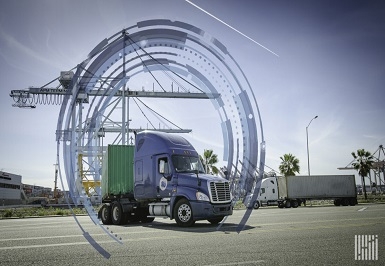.

For the past five years, global shippers have experienced constant disruption from unforeseen events, pushing logistics providers to provide robust solutions for more resilient supply chains.
Freight forwarding platforms, real-time visibility and warehouse robotics have emerged to provide shippers with options to operate through the disruptions.
Below are three emerging supply chain technology trends to consider for your organization in 2023.
Artificial intelligence
In November 2022, artificial intelligence company OpenAI launched ChatGPT (Chat Generative Pre-trained Transformer), illustrating to business executives and logistics providers the progress of AI technologies. In less than a minute, sales pitches, industry blogs and training documents were created with little to no grammatical errors.
According to a McKinsey report, “Notes from the AI frontier: Applications and value of deep learning,” AI technologies can provide an 89% bump in value beyond traditional analytics in transportation and logistics businesses.
With the amount of data that has been collected over the past few years from data-centric solutions providers, generative adversarial networks — systems that mimic abundant distributions of data— and reinforcement learning — systems learning by trial and error — can provide support for predictive maintenance, forecasting and customer service management tools.
Effective deployment of AI in our industry is taking place through robotic process automation (RPA), which takes the insights provided by AI from ingesting freight data, trade documents and emails and creates automated, rule-based tasks for front- and back-office processes.
In markets of low demand, logistics professionals will look to RPA to streamline their current operations and gain revenue using less human capital and time.
“2023 is going to be a year where you have to outdo the competition. You can’t rely on natural growth, because the growth isn’t going to be there like it has in the last couple of years. You’ve got to beat the competition. Speed is a way to do that,” said Joel McGinley, managing director of RPA provider Hubtek. Hubtek’s TABi product automates processes in sales, operations, accounting and customer service.
From bills of lading to commercial invoicing, payroll and customer billing, this industry consumes a lot of paper.
A McKinsey study from 2022 found that electronic bills of lading could save global trade $6.5 million in direct costs and allow for more than $30 billion in new trade volume, as 40% of all containerized trade transactions continue to rely on the transfer of paper records.
Moving away from paper records not only allows the transportation industry to improve its carbon footprint but enables companies to collect more industry data, provide real-time visibility of shipments in transit, improve internal operations and reduce costs.
According to less-than-truckload shipping platform MyCarrier, digitalization of manual processes could save logistics providers up to 2% of the cost of their freight under management. If the whole industry were to eliminate those processes, it could save up to $1.2 billion worldwide.
Related: MyCarrier, Loadsure partner to reduce LTL claims process from weeks to hours
For this reason, MyCarrier and 29 other transportation companies have teamed up to create digital standards to eliminate paper from the mode of transportation that utilizes paper-based processes for 85% of its shipments — the LTL industry.
The digitization standards group, the Digital LTL Council of the National Motor Freight Traffic Association, partnered with LTL provider RR Donnelley to digitize its manual operations, including rating, dispatching, tracking and documentation processes. By the end of the program, RR Donnelley saw $250,000 in cost savings a year and reduced call volume by 700-900 calls a day.
While paperless operations are being promoted for domestic transportation, they are becoming just as popular internationally.
Supply chain finance
Just as blockchain technology can help improve paper processes, it can also help improve the labor-intensive trade finance environment.
Supply chain finance is utilized to increase working capital in order to generate new revenue, or sales, in emerging markets and products. Corporations of all sizes, including behemoths like Apple, Dell, Procter & Gamble and Siemens, use fintech providers to broker these deals among financial institutions around the world.
It has become so popular that the International Chamber of Commerce found that 66% of banks have a supply chain finance plan in place after the world saw 38% growth in this financing strategy from 2020 to 2021.
Infusing supply chain finance solutions into your operations is not just about opening up opportunities for growth in times of slow demand, it also provides transparency into your financing network, reduces risk and allows for rapid settlement and improves relationships with your carrier vendors.